In September of 1868, a mere 13 years after Northfield was founded by John W. North, the young town decided to put on an agricultural fair. This fair lasted until 1938, when Northfield ceded the title “Rice County Fair” to Faribault, after a lengthy and occasionally acrimonious duel existence with Faribault’s fair, which had been held in that town since 1859. (See below the account of Rice County Historical Society Executive Director Susan Garwood.)

The Northfield Enterprise of Oct. 2, 1868, gave the “Report of Judges at the First Annual Fair of the Northfield Union Agricultural Society held at Northfield, Minn., Sept. 24th and 25th, 1868.” According to a history of the fair written by William Schilling in 1916, this fair took place “in the First ward of our beautiful city, centering about where H.A. Whittier’s residence now stands,” which would be the 500 block of E. 2nd St. in Northfield. Among the classes for which premiums were given were cattle, dairy, horses, bread, pastry and pickles, furniture, leather goods, sugar and honey, articles of dress, sheep, hogs, poultry, farm implements and machinery, fine arts, plants and flowers, vegetables, grain and seeds, ladies equestrianism and sewing machines. A “beautiful pair of Golden Pheasants” won a prize when no geese were entered.
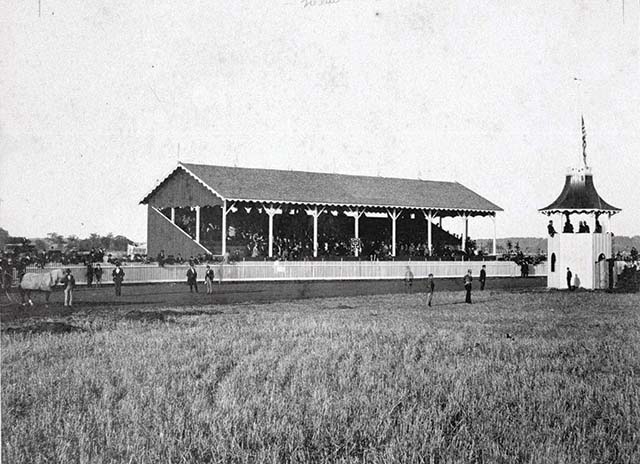
The second year, the Northfield Enterprise headline for Oct. 1, 1869, proclaimed, “Rice County Fair Grand Success. 1,215 entries! 5,000 People in Attendance. 118 variety of Apples.” Among the exhibitors at what was also called the Rice County Union Agricultural Fair: Northfield dentist Dr. D.J. Whiting, whose “masterly piece of workmanship” was said to place him at the head of his profession in Minnesota. His entry “consisted of a set of teeth so adjusted that it was made to bite at regular intervals. It attracted much attention.” The newspaper said, “We doubt if the State Fair, now in progress at Rochester, can show a better variety of vegetables than was exhibited at our Fair.” There were three entries from Faribault, Mr. Burnham’s “splendid photographs,” a peach and a plow.
A feature of the 1875 fair, according to the Rice County Journal of Sept. 29, was a “base ball” game between the Waseca Champions and Northfield’s Silver Stars, with Waseca winning 21 to 10. The Rice County Journal of Sept. 27, 1877, reported that on the last day of the fair a 20-mile race between professor DeWolf and a champion lady rider “attracted one of the largest gatherings seen.” However, on this day the entry fee “doubled without notice, from 25 cents to 50 cents,” prompting “frequent remarks” such as “The Rice County Fair won’t get another chance to swindle me.”
In 1879, in addition to horse races, seven hounds were let loose after a fox. The Rice County Journal of Sept. 18 said the hounds “soon overtook Mr. Fox, who seemed rather more inclined to fight than to run. Finally the dogs were called off.”
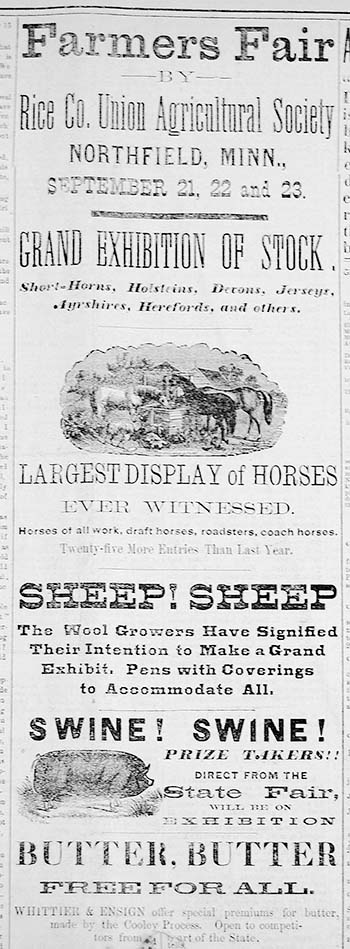
The advertisement in the Rice County Journal of Sept. 21, 1882, emphasized this year was to be a “Farmers Fair,” exhibiting stock, horses, “Sheep! Sheep! Swine! Swine!” and free butter, without horse racing premiums. There was, however, a 20-mile race between two female riders, “Minnesota’s champion” Myra Eckles and Miss Owens of Wabasha County.
Northfield’s founder, John North, addressed Northfield’s fair in 1883, his only visit back since he had been appointed surveyor general of the new Territory of Nevada by President Lincoln in 1861. The Rice County Journal of Sept. 20, 1883, said, “This distinguished gentleman has spent several days in the city renewing old time acquaintances and shaking hands with old time friends.” North spoke at the fair of changes in Northfield and his work on the Pacific coast, where he had founded the towns of Riverside and Oleander, California. This same issue contained a letter to the editor asking, “What is the trouble with our Rice County Fair?” Interest was said to be “almost dead.”
Interest was certainly high the next year, 1884, when Benjamin Butler visited the fair. Butler was the much despised first federal military governor of New Orleans in 1862 during the Civil War. At the time of his appearance at the fair, he had been the 33rd governor of Massachusetts from 1883 to 1884 and was now running for the presidency. His son-in-law, General Adelbert Ames, was a member of the family that owned Northfield’s Ames Mill. Ames had been governor of Mississippi in 1874 and Cole Younger (of the James-Younger Gang that robbed the First National Bank in Northfield in 1876) claimed one of the reasons for choosing the Northfield bank was their belief Ames and Butler had “stolen money” from the South there (a story which has been discredited).
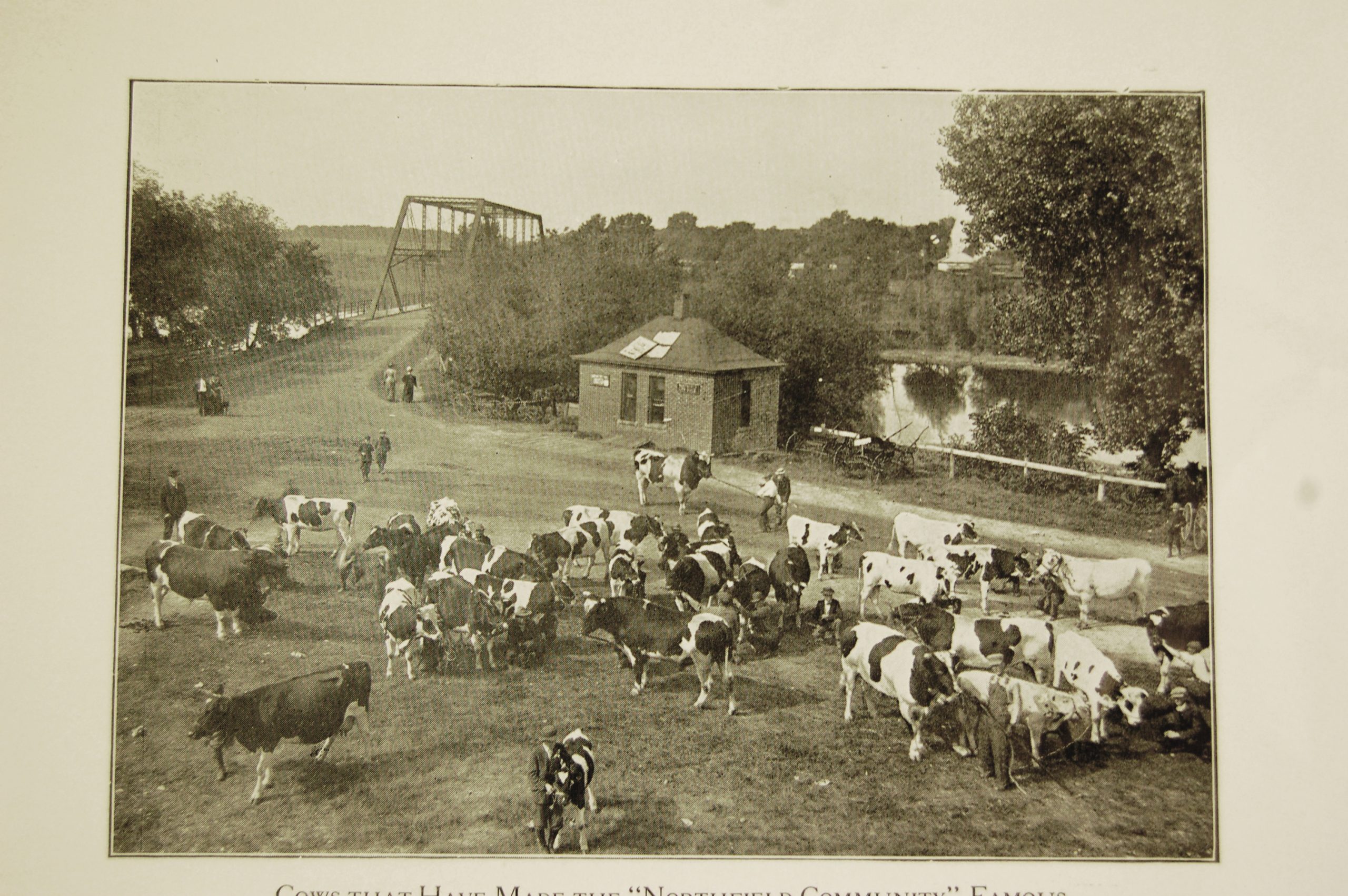
The Oct. 4, 1884, Rice County Journal reported that on opening day, a reception committee went to Farmington to meet the special car on the 10:30 train bearing Butler, “the Greenback candidate for president.” Carriages were waiting to take him to the residence of his “intimate friend,” Capt. Jesse Ames (Adelbert’s father), where he met with admirers. At 1:30, Butler was introduced at the fair. And, although his appearance had been advertised for only three days and it had rained that day, at least 1,200 people came to hear him speak for an hour and 15 minutes.
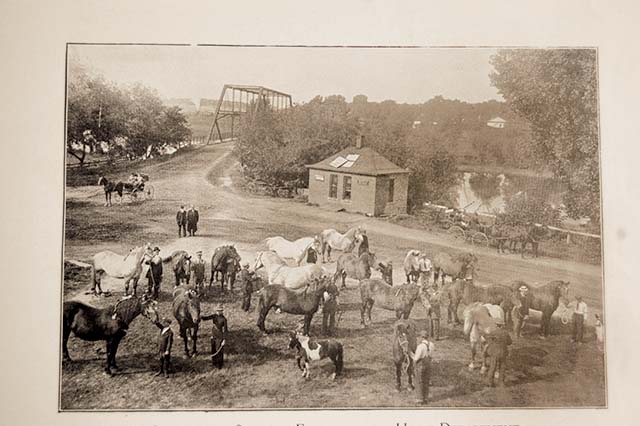
“A Malicious Falsehood” was how the Rice County Journal of Sept. 20, 1884, had responded to a Faribault Democrat story about this visit to the Northfield fair of Benjamin Butler. The Journal quoted the Faribault newspaper as saying that 1,200 people had paid 35 cents at the Northfield fair grounds, “impelled by curiosity to see and hear the notorious Benjamin F. Butler, of Massachusetts, the hero of Fort Fisher, New Orleans, Tewkesbury, and candidate of the Butler party for the presidency. Their curiosity was entirely gratified, but at an expense, the extravagance of which has never been equaled since Benjamin Franklin bought the whistle. Had there been anything else on the grounds to be seen or heard – a bull calf or a pumpkin – a lame duck or an ear of pop corn, with which the expense could have been divided there would have been less grumbling – but there was nothing. Ben was all there was of the 35-cent show.”
The Journal fought back, saying, “If it was extravagance to pay 35 cents to go to the county fair that day, it was reckless and shameful profligacy to pay 50 cents to go to the Faribault fair any day it was in session this year, for it was acknowledged that the exhibits and amusements at the county fair here were fully up to Faribault fair at any time.” The Journal said they noticed only 30 from Faribault at Northfield’s fair, while “at least a hundred” from Northfield’s vicinity went to Faribault’s fair. And Faribault “wanted Northfield merchants to close their stores and attend their fair. Such supreme cheek.” The story concluded, “We are not in the least envious or jealous of our sister city.” Northfield will “prosper and entertain the people, unmindful of the inky slings of papers in other towns.”

It was not over. The headline of the Oct. 4, 1884, Rice County Journal was “That Falsehood Again.” The Journal said that the Faribault Democrat “still insists on slinging mud at the Northfield fair.” There was “whining” from Faribault “because Northfield did not charter a dozen special trains and go down to that city in a body on fair week.” And the Faribault paper claimed attendance from Faribault at Northfield’s fair had been very “liberal.” The Journal scoffed, “Not to exceed 20 were present from Faribault. Such liberality would make a horse laugh.” The Journal continued, “We believe there is room for two good fairs in Rice county, and so far as we are concerned will do all we can, whenever asked, to aid the fair at Faribault,” but the county fair “properly belongs” in Northfield. The story concluded, “The writhing and squirming and contortions and blind fury of the Democrat show that it has been hit hard. We simply regard the editor of the Democrat with commiseration, and pity the frothings of the poor man, whom long disappointment has evidently soured and the gangrene of meanness has well-nigh poisoned.”
The highlight of this 1884 fair (besides the Faribault “frothings”) was a race between Hart C. Johnson, a bicyclist, and a celebrated trotting horse named Joe Green. Johnson won the race in 17 minutes and 49 seconds. Also, an exhibition box of ferrets attracted a crowd “constantly around the box to watch the beautiful little things.” It was noted, not for the first time, that new buildings were badly needed for the next fair.
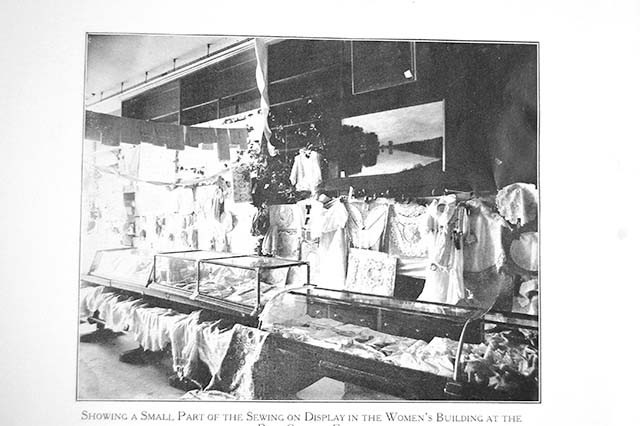
Street fairs were held for the 19th and 20th annual fairs. Livestock was shown at the rear of where Northfield’s Armory is today and exhibits were housed in vacant buildings and in stores on Division Street. Schilling wrote that permanent grounds were secured for the 23rd annual fair, in 1889, “a lease of the grounds being made by D.S. White and he in turn gave the society a long lease. A horse barn 28 by 60 was erected and also shed for the cattle. This was on the ground now owned by C.F. Berg.” (Note: In The Country Gentleman magazine of Feb. 22, 1913, Berg’s 65-acre farm south of Northfield was featured as a steer, sheep and swine farm that “shows a profit over ninety dollars to the acre.”) The 24th annual fair of 1890 welcomed a new two-story building for display purposes.
Between 1905 and 1910, attendance sometimes soared to 12,000 on the closing day when a livestock parade was held. In 1911, there were two tugs of war, between Northfield businessmen and farmers and between Carleton and St. Olaf athletes. The manager of the Gem Theater also had a “treat in store for fair visitors in a troupe of trained alligators.” The Sept. 23, 1911, Northfield News called that year’s fair a great success, with speakers praising the stock exhibits as “NONE BETTER IN STATE” with “splendid agricultural, poultry and fruit exhibits.” Indeed, starting in the latter part of the 19th century, Northfield was becoming known as a source for Percheron horses, which led to fine displays of horses at the fairs.
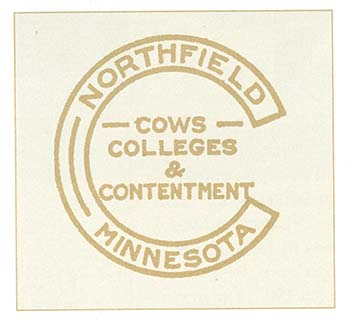 The town also became celebrated for its purebred cows, largely due to the influence of William F. Schilling, a Northfield News editor from 1897 to 1904 who had leased Spring Brook Farm in 1904, purchased it in 1910 and operated it to raise Holsteins until he sold the farm to St. Olaf in 1945. Northfield’s famous slogan, “Cows, Colleges and Contentment,” came from the era when Northfield reigned as the center for breeding purebred Holstein cattle. In 1914, the Northfield News sponsored a contest for a town slogan and the winning entry came from Ludwig Roe, member of the News staff, according to longtime Northfield News writer and editor Maggie Lee. (Later on, “Northfield: A Special Place” was adopted as a slogan but, in 1991, Northfield News readers voted to bring back the three Cs.)
The town also became celebrated for its purebred cows, largely due to the influence of William F. Schilling, a Northfield News editor from 1897 to 1904 who had leased Spring Brook Farm in 1904, purchased it in 1910 and operated it to raise Holsteins until he sold the farm to St. Olaf in 1945. Northfield’s famous slogan, “Cows, Colleges and Contentment,” came from the era when Northfield reigned as the center for breeding purebred Holstein cattle. In 1914, the Northfield News sponsored a contest for a town slogan and the winning entry came from Ludwig Roe, member of the News staff, according to longtime Northfield News writer and editor Maggie Lee. (Later on, “Northfield: A Special Place” was adopted as a slogan but, in 1991, Northfield News readers voted to bring back the three Cs.)
The Nov. 4, 1911, Northfield News happily announced “AN IDEAL LOCATION FOUND” for the fair, the “Stewart property on the South Side of Ames Mill on West Side of River Purchased” (the site of Ames Park today). An “unsightly swamp” would be turned into useful property, with three feet of fill needed. Schilling, in his book Up and Down Main Street Forty Years Ago, has an entertaining account of how he and merchant William Ebel had taken a boat and gone out “among the bull rushes and speared down to see if there was a bottom to the place and, finding one, we decided to call a meeting of the fair board and citizens and put the matter of purchasing the water and mud and covering the same with tin cans, ashes, leaves and lawn clippings. This was done and a drain tile was run thru the grounds to the river and farmers were given stock at the rate of $10.00 a share, and this could be paid by hauling dirt and gravel to cover the cans, etc. Some twelve million years from now some of the archaeologists at Carleton and St. Olaf will dig down in this spot and issue a lengthy treatise on the same, probably by the aid of the New Deal, telling of a great hotel being located there judging from the number of petrified cans and grape fruit parings found there.”
In 1912, Carleton professor Frederick Hill gave the agricultural society $500 to help improve the grounds and George Phillips gave two lots at the west corner of the 5th Street Bridge.
The 1915 fair brought a revived nomenclature battle, this time in the Faribault Daily News and the Northfield Independent. The Independent headline of Sept. 9, 1915, was “Faribault Daily News Wants Use of Name Rice County Fair.” The editorial from the Faribault paper was quoted: “It is a pity that Northfield took over the title of ‘Rice County Fair’ in the period when there was no fair at Faribault. That is a name which by every right belongs to the fair at the county seat. Northfield ought to return the name to this fair. Northfield will never be able to build up anything like the institution that will be developed here in the next half dozen years. In spite of the assumption of the name by the smaller city, the fair at the county seat will come more and more to be recognized as the real Rice County Fair.”
The Independent replied, “It is not likely that Northfield will ever part with the title that it has held for 49 years.” The “honor and prestige of Rice county” in exhibiting the county’s products will be “well taken care of in this city, in spite of its smaller population.” The writer did concede Faribault was ahead “in the line of sports and amusement attractions.

For the 1915 fair, the new Northfield Armory, though not quite completed, was used, and the old YMCA building, which had been closed since 1900, was pressed into service for sewing, art and culinary exhibits. (It is now the home for the Northfield Arts Guild at 304 Division St.). The WCTU booth dispensed temperance literature and had posters illustrating the evils of liquor. For amusement, there were acrobats, jugglers, a trained dog and monkey show and a street parade with floats, decorated autos and bands. The parade concluded with “three wagons of the fire department, with the drivers lashing their horses in a furious gallop” down the street, reminding the spectators of “the pictures of the old Roman chariot races.”
The Northfield Independent account of the fair on Sept. 30, 1915, decried the “merrymaking of green cap freshmen.” The students began rushing up and down the streets and “tried to break into the moving picture shows. Foiled at these places, they made for the merry-go-round and without stopping to buy tickets crowded on the machine in such numbers that considerable damage was done.” But overall, the fair covered expenses when 902 season tickets and 1,997 daily tickets were sold at 50 cents and 25 cents respectively.
The 1916 fair was billed as the 50th year of Northfield’s Rice County Fair and the Northfield News, which had been headquarters for the fair for many years, published a Golden Jubilee Souvenir edition, dated October 1916, with a history of the fair written by Schilling. An editor’s note said, “In his research work for material for this article Mr. Schilling discovered that the first Fair was held in 1868. From this a college professor would deduce the fact that the Rice County Fair is only 49 years old and that the Golden Jubilee observance is a trifle previous. At what period in its history the error in reckoning crept in has not been discovered but the record will have to stand as established and the community will have to proceed to hold the 50th Rice County Fair, taking pride in the fact that any town that can hold 50 annual fairs in 49 years is ‘going some.’”
This Jubilee fair featured relics from the pioneer days for the first time. Then, in 1919, there was a “victory booth” at the Armory, with souvenirs from World War I, including helmets, shells, bayonets and other war relics. This 1919 fair emphasized home talent and the Northfield News of Sept. 12 said women were replacing “the questionable or even evil influences of the commercial carnival” with a “Community Spirit” pageant at Carleton’s Laird Field. There was also a minstrel show, hula dancers, puppet show and a Norwegian kitchen.

Despite continued pressure from Faribault to have the fairs consolidated in Faribault (with meetings on the subject), the impasse continued. The Northfield fair was touted as “Best Fair in Northwest” by the Northfield News of Oct. 6, 1922, citing total three-day attendance of 6,000, unequalled exhibits and 2,300 season tickets sold (normally 800) because of a drawing for a Dodge car from DeMann & Sons Garage. The paper did admit that there was not room for all the crowds on the grounds and in the buildings. On Oct. 13, the News said, “No county like Rice should attempt to maintain two county fairs such as the Northfield and Faribault fairs” and contended that the “Faribault fair was this year even less successful than previously.” Not surprisingly, the Northfield News felt Northfield should be the site of the one inclusive fair, in a “dairying and diversified farming community that has no superior anywhere in this county or state.”

Finally, a banner headline of the July 8, 1938, Northfield News was “Rice County Fair to be Discontinued,” with subheads, “Managers Also Ready to Sell Fair Grounds; Decide Efforts to Maintain 72-Year-Old Enterprise Here are Futile.” Northfield’s Rice County Fair was “officially voted out of existence by the board of managers of the Rice County Agricultural Society.” Board members said that maintenance of the fair was an “uphill struggle” in recent years. Schilling, secretary and manager of the fair, said, “With the county owning the fair grounds at Faribault and practically subsidizing the Faribault fair’s physical plant, it is impossible to gain adequate support for a creditable fair in Northfield.” Northfield was about to lose state aid for premiums and the Faribault fair was more centrally located and not as close to the State Fair.
Three Northfielders (W.F. Schilling, A.J. Lashbrook and C.C. Heibel) joined the board of directors of the Faribault Fair and Agricultural Association on July 8 and Monday, Aug. 15, was designated “Northfield Day” at Faribault’s 1938 all-inclusive fair. There is no word on how many citizens of Northfield attended.
Faribault’s Rice County Fair Has Long History
By Susan Garwood, Executive Director of the Rice County Historical Society
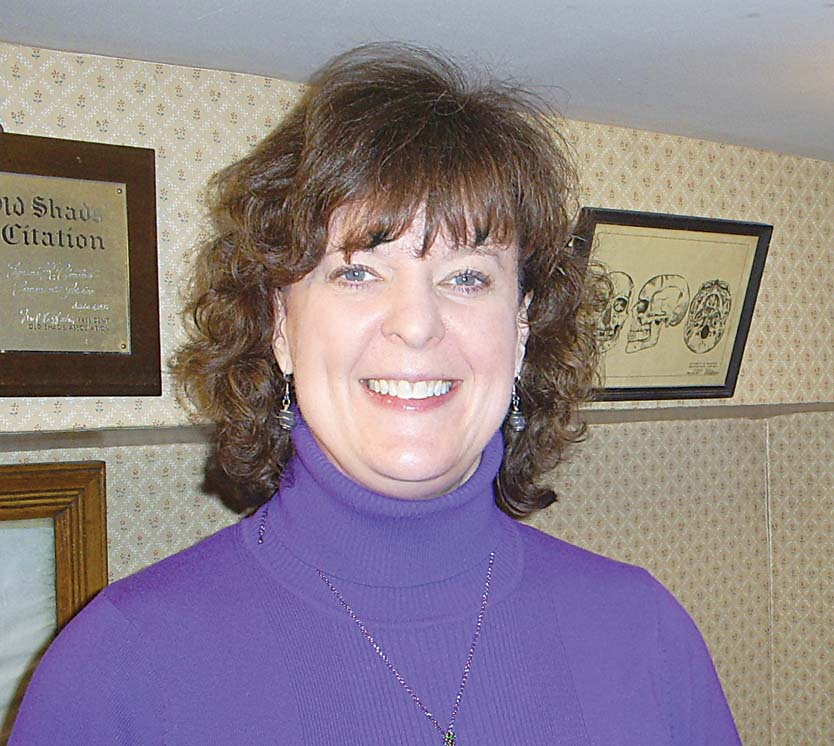 The Rice County Historical Society in Faribault has the Secretary’s Book of the Rice County Agricultural and Mechanical Association from 1858. This wonderful book includes bylaws, a listing of premiums, clippings from the paper announcing county fairs, etc. Fascinatingly, Northfield’s founder, John W. North, is listed as the first president and one of the founding members. He made several motions at their first meeting. The constitution said the object was to “improve the condition of Agriculture, Horticulture and the Mechanical and Household Arts.”
The Rice County Historical Society in Faribault has the Secretary’s Book of the Rice County Agricultural and Mechanical Association from 1858. This wonderful book includes bylaws, a listing of premiums, clippings from the paper announcing county fairs, etc. Fascinatingly, Northfield’s founder, John W. North, is listed as the first president and one of the founding members. He made several motions at their first meeting. The constitution said the object was to “improve the condition of Agriculture, Horticulture and the Mechanical and Household Arts.”
From what I can tell, the bylaws stated that a function of the Association was to hold an annual county fair and that it could be held at one of a list of cities, which included: Northfield, Cannon City, Faribault, Warsaw and Morristown. But the first Rice County Fair, planned for 1858, was canceled due to a financial crisis. The 1859 fair was planned late in the summer, then held in September in Faribault with an estimated 2,000 in attendance. The next two fairs of 1860 and 1861 were also in Faribault. The 1862 fair was planned to be held on McClelland’s farm in Cannon City Township but, according to a broadside that was pasted in the book, it was canceled because of the US/Dakota Conflict. The book drops off in 1863 and the next listing is in 1870. Most of the records from the 1920s and later were burned when the Rice County Fair Grandstand burned down in the 1990s.
The early county fair planners understood the challenges with travel and roads and the bylaws written in 1858 opened the opportunity for other communities within the county to host a county fair. So, although Northfield did have its “first fair” in 1868, it was not THE first Rice County Fair.
During the subsequent decades, Faribault developed the fair grounds arena including building a grandstand, barns, and other buildings that were used year round by National Guard encampments and other community-wide events in addition to the county fair. Meanwhile, Northfield’s Rice County Fair, which increased in regularity over time, struggled to find land to build permanent buildings and dedicated grandstand areas. The Northfield fair was held at a variety of locations including Ames Park and even the Northfield Armory.
For a time, Northfield and Faribault held fairs in alternating years. At other times the two communities held fairs in the same year. Both communities also began soliciting funds from the Rice County Commissioners for their fairs. In 1938, after heavy pressure from both communities to select their fair as the one and only Rice County Fair, the county board selected Faribault because of the land and general investment in infrastructure. Since that time, Faribault has been the only community to host the Rice County Fair.






